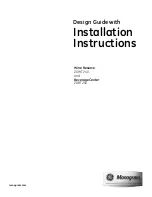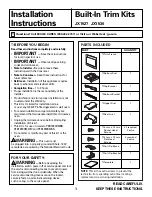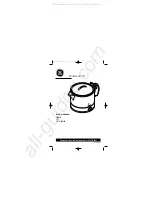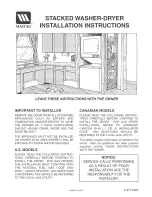
EN
EN
52
53
• The automatic functions may fail to evacuate bags and containers sufficiently,
when an excessively large amount of air is locked in your bags or containers.
In these cases, the “Pulse” function may help to reduce the pressure to the opti-
mum level. When you find it really difficult to get the vacuum system completely
air-tight (e.g. due to some particles or moisture on the vacuum gaskets or in the
valves), it may be helpful to use the “Pulse” function for vacuumizing the bag or
container. If required, press on the lid of the appliance (when sealing bags) or
on the container lid for getting the complete vacuum system (appliance and bag
/ container) as leak-free as possible.
When vacuumizing bags, you need to start the sealing process manually via the
“Seal Only” button, after the desired low pressure is reached.
PRESSURE DETECTION SYSTEM
• The appliance monitors the pressure during operation. The vacuum pump stops
automatically, when the pre-defined low pressure is reached. However, if the
pressure cannot be reduced within the preset time duration, the vacuum pump
stops after approx. 10 seconds of operation. The vacuum pump may stop pre-
maturely in the following cases: Any part of the complete vacuum system may
be leaking: from bags or containers to the vacuum gaskets of the appliance.
Check, all parts for leakage (see: ‘Solving Problems’).
• There is too much air in the bags and containers. The pressure is reduced too
slowly. This may occur, when airy items are vacuumized in very large contai-
ners or bags.
In these cases, you may try the “Pulse” function (see above: ‘Pulse Function’ or ‘Ope-
ration / Manually Controlling the Vacuum Pump’).
OVERHEAT PROTECTION
A self-resetting overheat protection device switches off the appliance automatically
when it gets overheated, saving your Design Vacuum Sealer Basic from damage.
With the overheat protection triggered, the appliance cannot be operated again.
The overheat protection may be activated, when evacuating and sealing many items
in short time, when operating the vacuum pump continuously via the “Pulse” function
for more than 30 seconds, or when operating the appliance at high environmental
temperature.
NOTE
To avoid over-heating, the automatic vacuum functions work continuously for max.
30 seconds.
Taste
Verwendung
Canister
This button serves 2 functions:
• Evacuating containers:
Touch this button shortly. The vacuum pump ope-
rates until the pre-defined low pressure is reached. Thereafter it stops automati-
cally. If the reached pressure is not surficient, start the function repeatedly. The
container is sealed via the pressure valve in the container lid.
Note:
You need the appropriate vacuum hose for using this function (see: ‘Knowing
Your New Design Vacuum Sealer Basic / Optional Accessories’).
• Locking the control panel:
Hold the button touched for approx. 1 second.
All buttons illuminate shortly and a beep is heard. Touch this button again for
approx. 1 second for unlocking the control panel.
Pulse
Use this function for being in full manual control of the evacuating process (see below:
‘Pulse Function’).
PULSE FUNCTION
Using this function, the vacuum pump is operated as long as you keep your finger
on the “Pulse” button, without ventilating the vacuum chamber, when the button is
released. Therefore, you can start and stop the vacuum pump repeatedly.
CAUTION
– When using the “Pulse” function, the pressure detection system
is inactive (see: ‘Operation / Manually Controlling the Vacuum Pump’).
To avoid overload: Do not let the vacuum pump operate continuously for more than
30 seconds. Additionally, when the limit of pressure reduction is reached, the wor-
king noise of the vacuum pump will change audibly. Then, at the latest, release the
“Pulse” button. Control the vacuum pump manually, when it is required to reduce the
pressure really carefully and/or stop the pressure reduction exact at the right level:
• You may apply short pulses for carefully vacuumizing sensitive items or let the
vacuum pump operate continuously until the appropriate low pressure is reached.
• Controlling the pressure within a container or bag manually may help to protect
liquids and powders from being sucked out.
• During evacuation, food with high content of moisture could get undesirably dry,
because the liquid may evaporate and be sucked out—even when placing this
type of food for a short time into a freezer, before vacuum sealing. Carefully
reducing the pressure may minimize the amount of liquid that is lost.
• While evacuating a bag, a considerable pressure will be applied to the objects
within. Sensitive objects may be crushed and smashed. While evacuating a con-
tainer, airy types of food could remarkably blow up and/or burst (e.g. bakery
products, eggs).













































